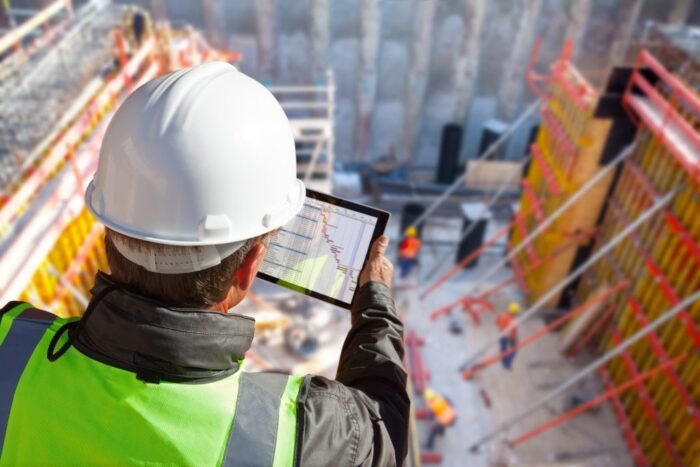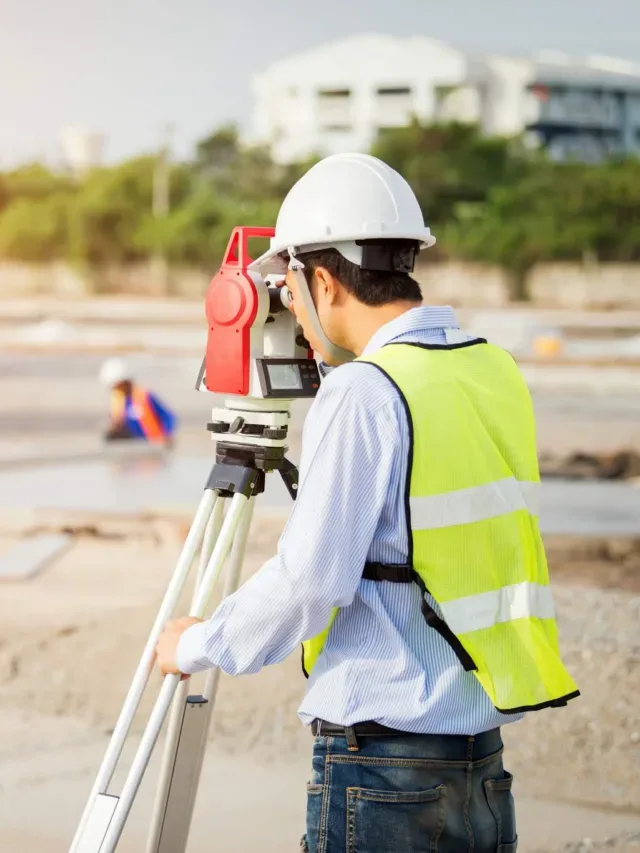Challenges Faced by Civil Engineers in Building Construction

Common Challenges Faced by Civil Engineers in Building Construction and How to Overcome Them
Introduction to common challenges in building construction for civil engineers
In the realm of building construction, civil engineers play a crucial role in designing, planning, and overseeing the construction process. However, they often encounter various challenges that can hinder project success and require innovative solutions. This article explores the common challenges faced by civil engineers in building construction and provides insights into how these challenges can be overcome. From structural design complexities to material selection dilemmas, environmental considerations, project management hurdles, site-specific constraints, regulatory compliance, and legal issues, civil engineers must navigate a multitude of obstacles. By understanding these challenges and implementing best practices, civil engineers can ensure the successful completion of construction projects while delivering safe, durable, and sustainable structures.

1. Introduction to common challenges in building construction for civil engineers
Understanding the role of civil engineers in building construction
Civil engineers play a crucial role in building construction. They are responsible for designing, planning, and overseeing the construction process to ensure the successful completion of projects. From skyscrapers to bridges, civil engineers tackle various challenges to create safe and functional structures.
The significance of addressing challenges for successful project outcomes
Addressing challenges is vital for achieving successful project outcomes. Failing to overcome these obstacles can lead to costly delays, compromised safety, and unsatisfactory results. By recognizing and tackling common challenges, civil engineers can ensure the smooth execution of construction projects.
2. Structural design and analysis challenges
Accurate assessment of building loads and forces
One of the major challenges faced by civil engineers is accurately assessing building loads and forces. Determining the weight, wind impacts, and seismic forces on a structure requires meticulous analysis. Advanced software and technologies can aid engineers in accurately predicting these loads to ensure the structural integrity of the building.
Dealing with complex structural configurations
Complex structural configurations, such as curved or asymmetric designs, can pose significant challenges for civil engineers. These configurations demand innovative approaches to ensure stability and maintain the structural integrity. Collaborative problem-solving and the use of advanced modeling tools can assist engineers in overcoming these challenges.
Addressing structural stability and durability concerns
Ensuring long-term structural stability and durability is crucial for any construction project. Challenges arise when considering factors like material properties, environmental conditions, and potential hazards. Careful material selection, proper maintenance plans, and thorough inspections can help civil engineers address these concerns and ensure the longevity of the structure.
3. Material selection and quality control issues
Evaluating material properties and performance
Selecting the right materials for a construction project can be challenging. Civil engineers must evaluate material properties such as strength, durability, and compatibility with other components. Conducting thorough research, consulting experts, and testing materials can aid in making informed decisions.
Ensuring compliance with building codes and standards
Compliance with building codes and standards is crucial for construction projects. Civil engineers must stay updated with the latest regulations to ensure the safety and performance of the structure. Regular inspections and rigorous quality control measures help in maintaining compliance throughout the construction process.
Implementing effective quality control measures
Quality control is essential to ensure that construction projects meet the required standards. Challenges can arise due to factors like material inconsistencies, human error, or subcontractor coordination. Implementing robust quality control measures, including inspections, testing, and documentation, can help civil engineers identify and rectify issues promptly.

4. Environmental and sustainability considerations
Addressing climate change and natural disaster risks
With climate change and natural disasters becoming more frequent and severe, civil engineers must consider these factors during the construction process. Designing structures to withstand extreme weather events and implementing appropriate measures for disaster resilience are crucial for long-term sustainability.
Integrating green building practices and energy-efficient designs
Promoting sustainability in construction projects is essential for reducing the environmental impact. Civil engineers can incorporate green building practices by using energy-efficient designs, optimizing resource usage, and employing renewable energy sources. By integrating sustainability into their projects, civil engineers contribute to a greener future.
Reducing the environmental impact of construction activities
Construction activities can have a significant environmental impact. Challenges include minimizing waste generation, managing construction debris, and reducing energy consumption during the construction phase. Employing sustainable construction methods, recycling materials, and implementing efficient waste management strategies help civil engineers minimize the environmental footprint of their projects.
By recognizing and proactively addressing these common challenges, civil engineers can enhance the success and sustainability of building construction projects. With the right knowledge, expertise, and innovative approaches, they can overcome obstacles and build structures that stand the test of time.
5. Planning and project management hurdles
Developing comprehensive project plans and schedules
When it comes to building construction, one of the biggest challenges faced by civil engineers is developing comprehensive project plans and schedules. It’s like trying to solve a Rubik’s cube while blindfolded. But fear not! Start by breaking down the project into manageable tasks and setting realistic deadlines. Utilize project management software to keep track of progress and make adjustments as needed. Remember, a well-planned project is half-way to success!
Managing cost and budget limitations
Money, money, money – it’s a constant hurdle in the world of construction. We’ve all heard stories of projects going over budget faster than a shopping spree. To avoid this, create a detailed budget from the get-go and closely monitor expenses throughout the project. Prioritize cost-effective solutions and explore value engineering options. Remember, pennies saved today could be dollars saved tomorrow!
Communicating and coordinating with project stakeholders
The construction industry is like a massive game of telephone, where miscommunication can lead to disastrous results. To overcome this challenge, establish clear lines of communication with project stakeholders right from the start. Regular meetings, progress reports, and open dialogues will keep everyone on the same page. Remember, communication is key – unless you’re talking about your favorite Netflix show during work hours!
6. Site-specific challenges and constraints
Dealing with limited space and difficult terrain
Sometimes, civil engineers have to work their magic in the tightest of spaces or toughest terrains. It’s like trying to solve a puzzle with missing pieces. To overcome this, embrace innovative design solutions that make the most efficient use of limited space. Consider alternative construction methods or modular designs. And remember, always measure twice before building once!
Addressing site contamination and geological issues
Mother Nature doesn’t play fair when it comes to construction. Site contamination and geological challenges can make civil engineers feel like they’re stuck between a rock and a hard place – literally. To tackle this, conduct thorough site investigations before starting construction. Take soil samples, assess any potential contamination, and bring in experts when needed. Remember, working with nature is like a dance – you just need to find the right rhythm!
Navigating logistical challenges and site access constraints
Construction sites can sometimes feel like navigating a labyrinth – full of twists, turns, and dead-ends. Overcoming logistical challenges and site access constraints requires careful planning and coordination. Make sure to plan for material deliveries, equipment access, and waste removal. Collaborate with transportation experts to optimize routes and minimize disruptions. And remember, it’s not a true construction project until you’ve played a game of “tetris” with heavy machinery!
7. Regulatory compliance and legal challenges
Understanding and adhering to building codes and regulations
Ah, regulations – the necessary evil in the world of construction. Understanding and adhering to building codes and regulations can feel like reading a foreign language at times. Seek guidance from regulatory experts, stay up to date with code revisions, and ensure proper documentation throughout the process. And remember, if all else fails, channel your inner Sherlock Holmes and embark on a regulatory treasure hunt!
Addressing zoning and land use restrictions
Zoning and land use restrictions can put a wrench in even the most carefully laid out plans. Overcoming these challenges requires a mix of creativity and resourcefulness. Collaborate with urban planners and architects to find innovative design solutions that fit within the restrictions. Advocate for variances whenever possible, and never underestimate the power of a persuasive argument and a well-drawn diagram!
Navigating legal disputes and liability issues
Legal disputes and liability issues are the boogeyman of the construction industry. Nobody likes dealing with them, but they sometimes rear their ugly heads. To navigate this minefield, document everything meticulously and ensure clear contracts with all parties involved. Consult legal experts when needed and be proactive in addressing any potential conflicts. And remember, if all else fails, there’s always the option of settling disputes over a game of rock-paper-scissors!
8. Innovative solutions and best practices for overcoming challenges
Adopting advanced technologies and software tools
Innovation is the name of the game for overcoming challenges in construction. Embrace advanced technologies and software tools that can streamline processes and improve efficiency. From Building Information Modeling (BIM) to project management software, utilize these tools to your advantage. Just remember, technology is great until it starts making jokes you don’t understand!
Encouraging interdisciplinary collaboration and knowledge sharing
Two heads are better than one, and multiple heads working together are even better! Encourage interdisciplinary collaboration and knowledge sharing among team members. Foster an environment that values different perspectives and encourages brainstorming sessions. Remember, the best ideas often come from unexpected places – just like that misplaced sock you found in the refrigerator!
Implementing proactive risk management strategies
Risk management is like the superhero cape every civil engineer needs to don. Implement proactive risk management strategies to identify and mitigate potential challenges before they even happen. Conduct thorough risk assessments, create contingency plans, and keep an eye out for warning signs. And remember, if something seems too good to be true, it’s probably just a pigeon wearing a disguise!In conclusion, the field of building construction presents numerous challenges for civil engineers. However, with careful planning, innovative thinking, and proactive problem-solving, these challenges can be overcome. By addressing structural design complexities, ensuring material quality, considering environmental sustainability, effectively managing projects, navigating site-specific constraints, complying with regulations, and adopting innovative solutions, civil engineers can successfully tackle the obstacles they face. Ultimately, by striving for excellence in their work and embracing best practices, civil engineers can contribute to the construction of safe, efficient, and sustainable buildings that meet the needs of communities.
FAQ
1. What are some common challenges faced by civil engineers in building construction?
Civil engineers in building construction often encounter challenges such as structural design complexities, material selection and quality control issues, environmental considerations, project management hurdles, site-specific constraints, regulatory compliance, and legal issues.
2. How can civil engineers overcome structural design challenges?
To overcome structural design challenges, civil engineers must accurately assess building loads and forces, address complex structural configurations, and ensure structural stability and durability through proper analysis and design techniques.
3. What role do environmental considerations play in building construction challenges?
Environmental considerations are crucial in building construction challenges. Civil engineers must address climate change and natural disaster risks, integrate green building practices and energy-efficient designs, and reduce the environmental impact of construction activities to create sustainable and resilient structures.
4. How can civil engineers effectively manage project-related challenges?
Civil engineers can effectively manage project-related challenges by developing comprehensive project plans and schedules, managing cost and budget limitations, and establishing clear communication and collaboration channels with project stakeholders. They should also implement proactive risk management strategies to mitigate potential obstacles and ensure project success.









